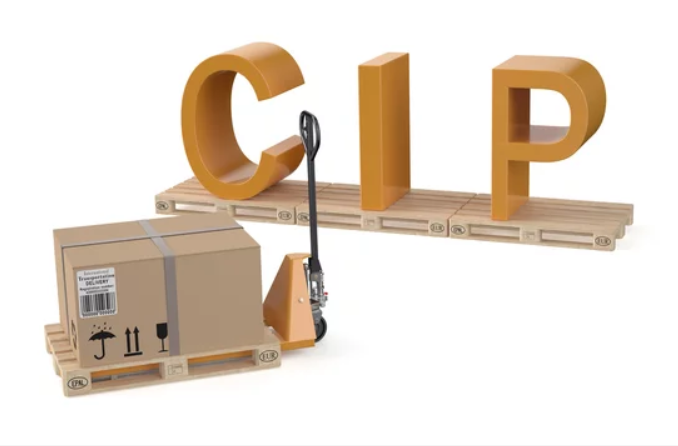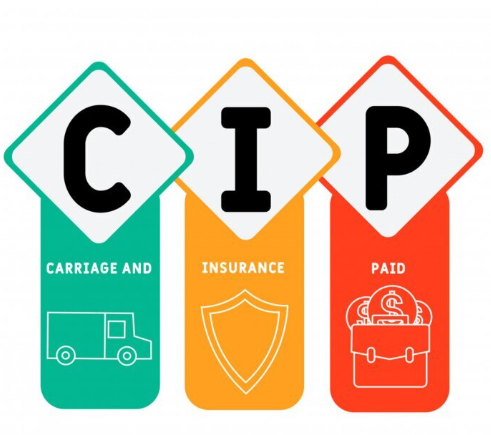
Here is a detailed explanation of CIP (Carriage and Insurance Paid To):
1. Seller’s Responsibilities
Under CIP, the seller has several important obligations:
Freight Costs: The seller is responsible for arranging and paying for the transportation of goods to the agreed-upon destination. This can be a port, warehouse, or another location specified in the contract.
Insurance Coverage: The seller must provide insurance for the goods during transit. This insurance must cover at least 110% of the value of the goods, based on the minimum coverage outlined in the Institute Cargo Clauses (C). The seller purchases this insurance to protect the buyer from risk, even though the buyer assumes responsibility for the goods once they are handed to the first carrier.
Delivery to the First Carrier: The seller fulfills their delivery obligation when they hand over the goods to the first carrier. At this point, the risk of loss or damage transfers to the buyer, but the seller remains responsible for paying transportation and providing insurance.
Export Customs Clearance: The seller handles all export formalities, including customs documentation and payment of duties or fees, if applicable.
Transport Documents: The seller provides the necessary documents to the buyer, such as the commercial invoice, transport documents, and proof of insurance, to ensure the buyer can claim the goods and receive compensation in case of damage or loss.
2. Buyer’s Responsibilities
Risk After Delivery to Carrier: Once the goods are handed over to the first carrier, the buyer assumes the risk of any loss or damage to the goods. However, the seller provides insurance coverage, so if the goods are damaged during transit, the buyer can claim compensation from the insurance policy.
Import Customs Clearance: The buyer is responsible for completing import formalities, such as paying duties, taxes, and complying with regulations in the destination country.
Additional Insurance (Optional): Although the seller is required to provide minimum insurance, the buyer can choose to purchase additional insurance if they want higher coverage or broader protection for the goods during transit.
3. Delivery Point and Transfer of Risk
a. Handing Over to the First Carrier
Under CIP, the seller’s responsibility for the goods ends when they are handed over to the first carrier, not when they reach the destination. This means that the risk of damage or loss passes to the buyer at this point, even though the seller arranges and pays for insurance and transportation to the final destination.
b. Designated Destination for Transport Costs and Insurance
The agreed-upon destination is where the seller must ensure the goods are delivered, and where they must arrange insurance coverage up to this point. The destination could be a specific port, terminal, or warehouse.
4. Comparison with Other Incoterms
CIP vs. CPT (Carriage Paid To):
CIP and CPT are similar, but the key difference is that CIP requires the seller to provide insurance for the goods. In CPT, the seller is only responsible for transportation, while the buyer must arrange their own insurance.
CIP vs. CIF (Cost, Insurance, and Freight):
CIF is used specifically for sea or inland waterway transport, while CIP applies to all modes of transportation. Both terms require the seller to pay for transportation and insurance, but CIF only applies to maritime shipments, whereas CIP covers any type of transport.
CIP vs. DAP (Delivered at Place):
In DAP, the seller is responsible for delivering the goods to the buyer at a specified location, but insurance is not required. Under CIP, the seller must not only arrange transport but also provide insurance coverage until the goods reach the destination.
5. Insurance Requirements under CIP
One of the key aspects of CIP is the obligation for the seller to purchase insurance. The insurance must meet the following criteria:
Coverage Amount: The insurance must cover at least 110% of the value of the goods, which is generally based on the value specified in the sales contract.
Minimum Coverage: The insurance must comply with the Institute Cargo Clauses (C), which provide basic coverage against risks such as fire, explosion, and overturning of the transport vehicle. If the buyer prefers more comprehensive coverage (e.g., against theft or damage during loading/unloading), they can arrange for additional insurance.

6. Real-World Example of CIP
Suppose a company in Canada purchases electronics from a manufacturer in South Korea under CIP terms, with the final destination being a warehouse in Toronto. The Korean manufacturer arranges transportation and insurance to cover the goods until they reach Toronto. Once the goods are handed over to the shipping company in Busan, South Korea, the risk of damage or loss transfers to the Canadian buyer. However, the seller provides insurance that would compensate the buyer if the goods are damaged in transit. The Canadian buyer also takes care of import duties and customs clearance upon arrival.
7. Advantages of CIP
Comprehensive Protection: CIP ensures that the buyer is protected through mandatory insurance, giving them peace of mind during international shipments.
Seller Handles Logistics: The seller takes responsibility for arranging both transportation and insurance, making the process more straightforward for the buyer.
Flexibility in Transport Modes: CIP can be used with all modes of transportation, making it highly versatile for different shipping scenarios.
Conclusion
CIP (Carriage and Insurance Paid To) is a valuable Incoterm that balances the responsibility between the seller and buyer by requiring the seller to arrange and pay for both transportation and insurance. While the seller assumes the costs of delivering the goods and securing insurance, the risk of damage or loss is transferred to the buyer as soon as the goods are handed to the first carrier. This term is ideal for buyers who want the seller to handle logistics but still require insurance protection for the goods in transit.